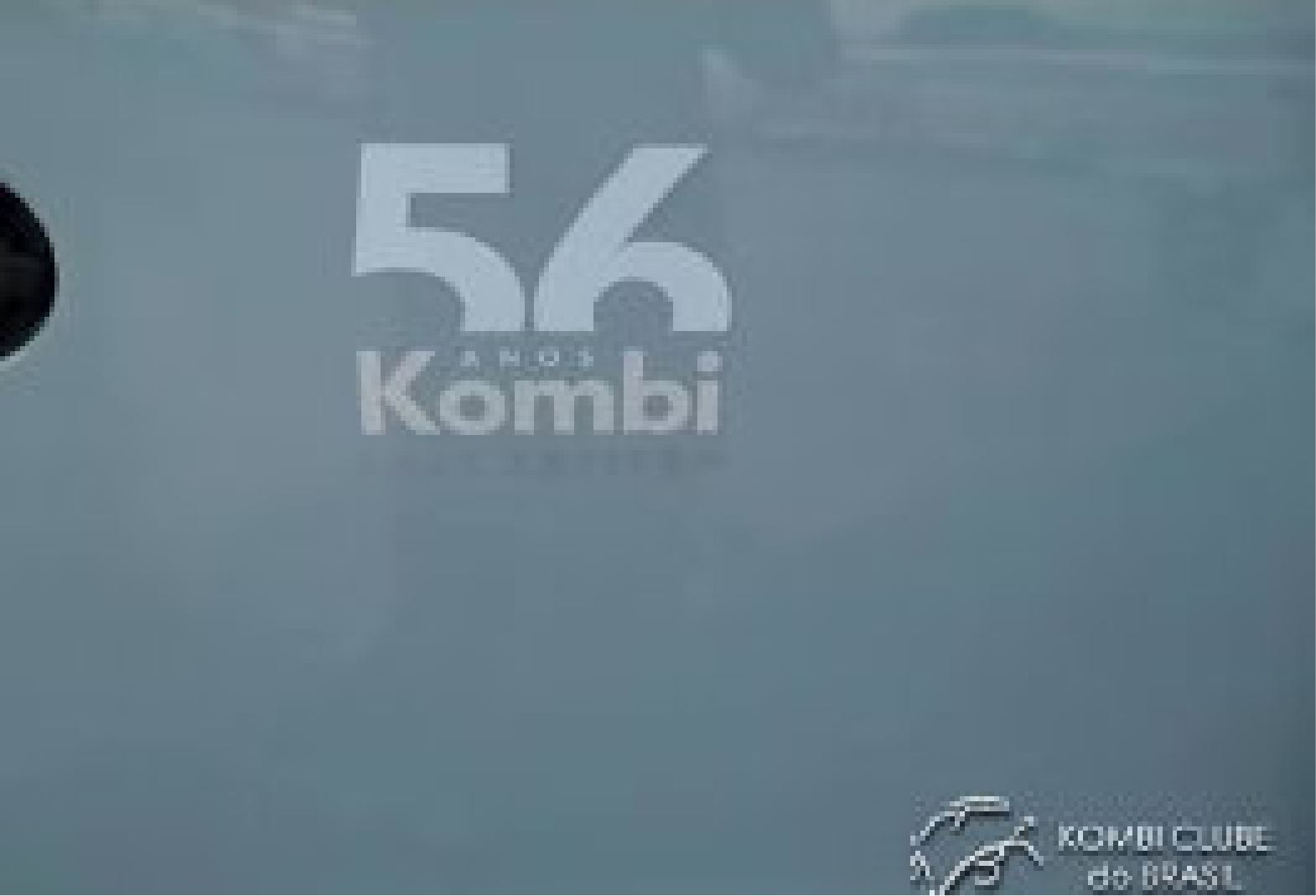TIMELINE OF THE BRAZILIAN KOMBI
1957 – Start of production national
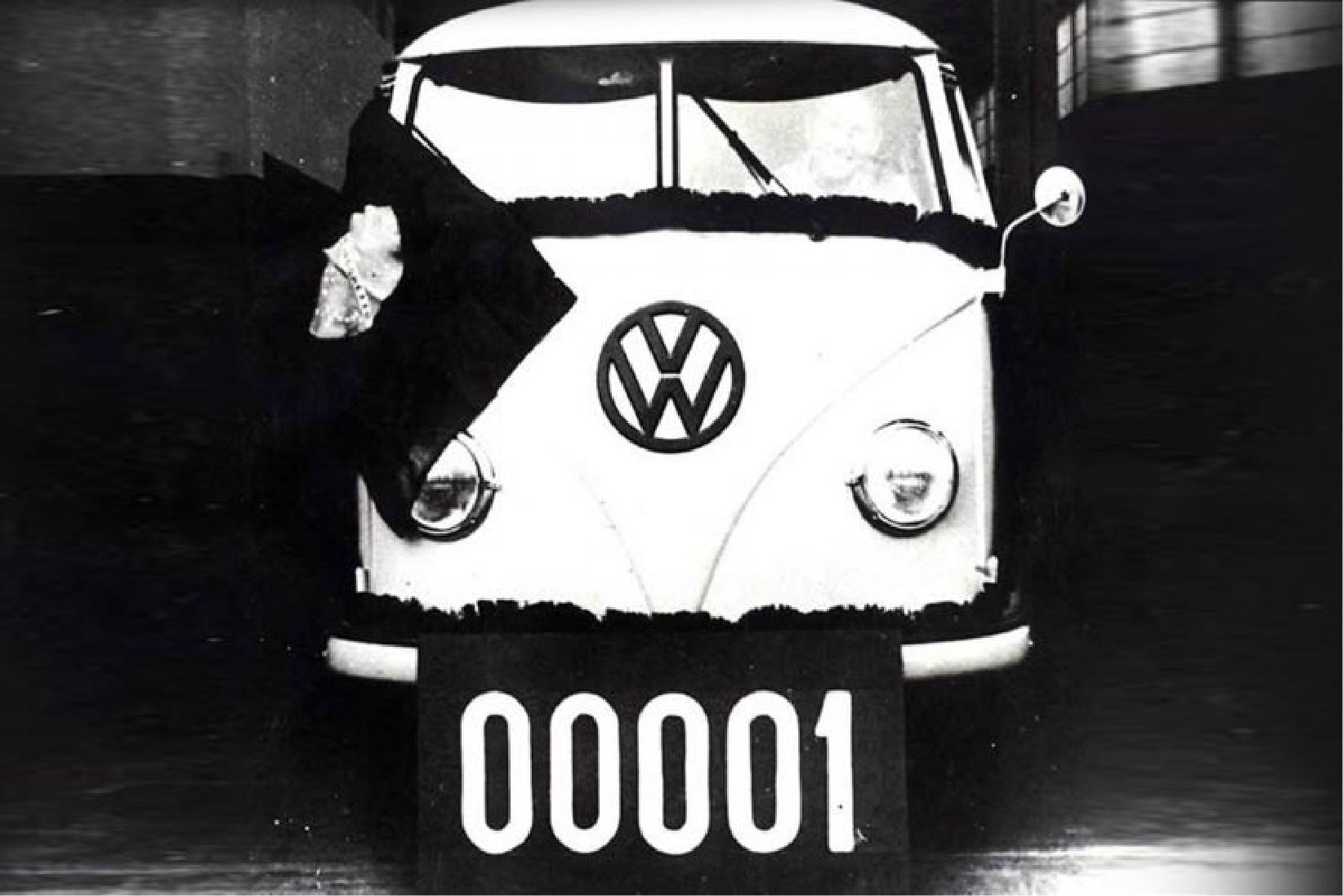
On September 2, 1957, the first Kombi manufactured by Volkswagen do Brasil rolled off the production line, marking the inauguration of the São Bernardo do Campo plant – the automaker’s first factory outside Germany. The whereabouts of this historic vehicle remain unknown.
In 1961, the 6-door version of the Kombi was launched. The units produced from the second half of that year became known as the “second series” because they introduced several updates: a fuel gauge on the dashboard, removal of the so-called “little bananas” (turn signal indicators), and a fully synchronized transmission.
1961 – 6-door Kombi
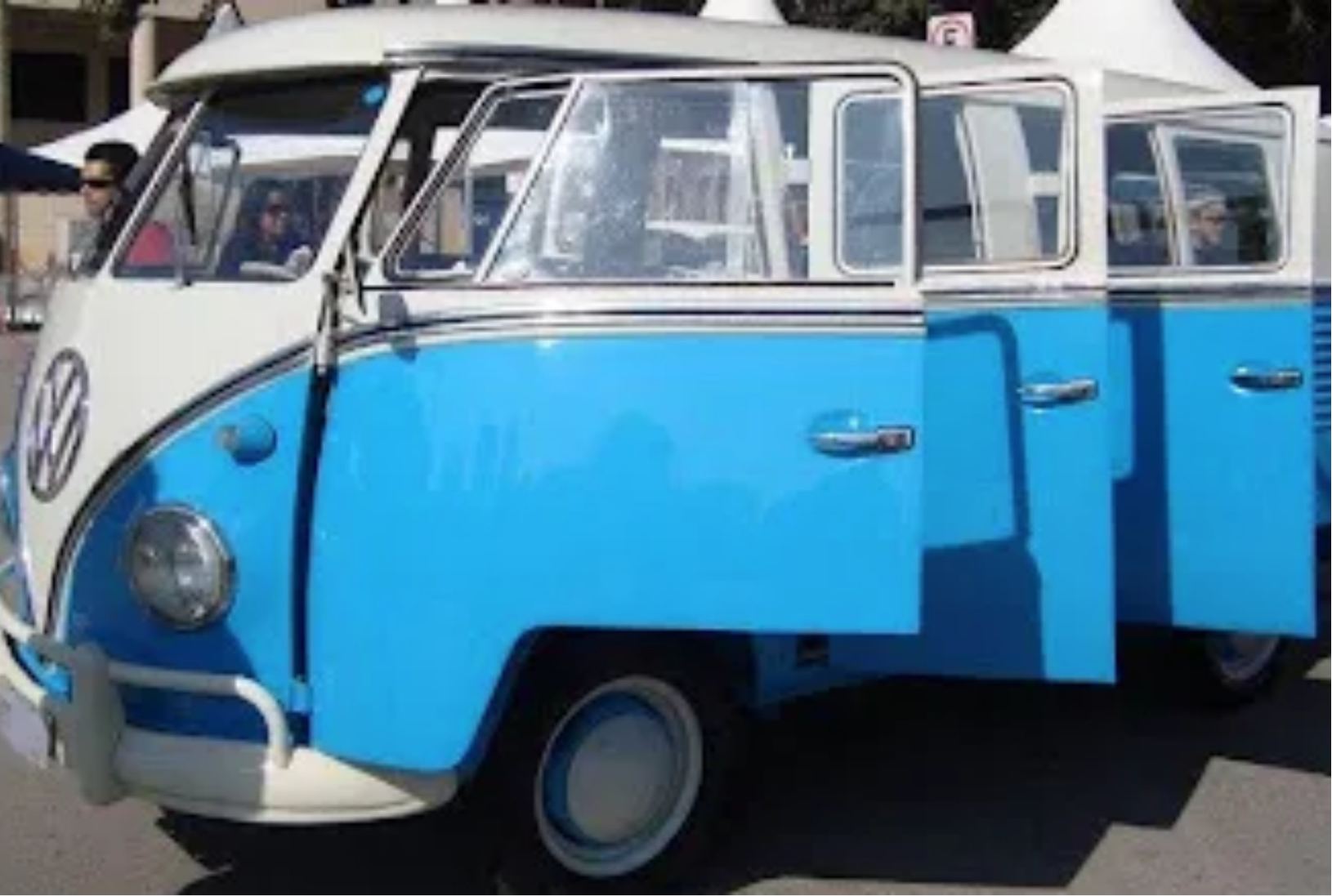
1963,1964 e 1965 Visual changes
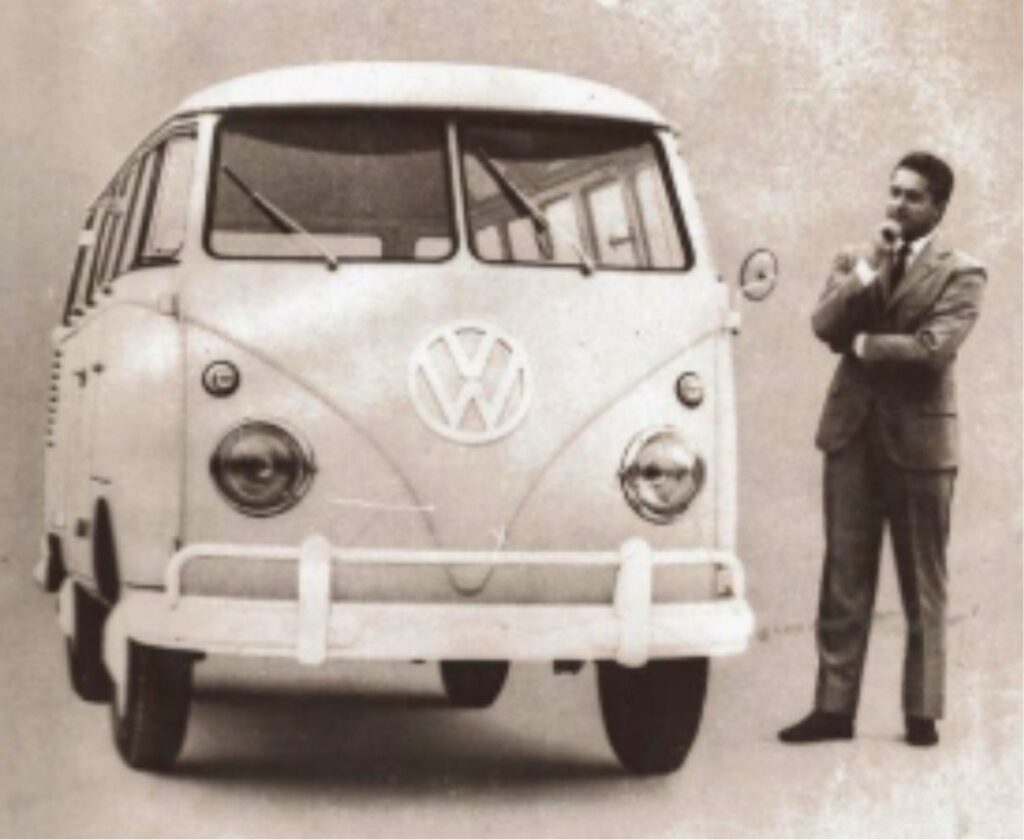
Starting in 1963, the Kombi underwent significant visual changes, such as the addition of two extra windows on each side — both on the sides and rear corners (known as “curvões”) — as well as a larger rear window on the engine cover. In 1964, modifications continued with the replacement of the traditional front turn signal lenses, known as “little nipples,” with a new model. The engine lid’s locking rod was replaced by a support spring, and in the Luxo and 6-Door versions, a windshield washer system was introduced — the same one used in the Beetle — with the water bottle placed in the lower center of the dashboard. In 1965, the engine’s ventilation grille was redesigned with inward-facing louvers, and creases were added to the rear wheel arch, giving the body a new look.
In 1967, the Kombi lineup received important updates, starting with the new 1,500cc engine delivering 44 horsepower, which gave the vehicle more power and agility. Accompanying this mechanical evolution, a front stabilizer bar was added, and the wheel diameter was reduced from 15 to 14 inches. Inside, the front seats adopted a new asymmetrical 1/3-2/3 layout, offering greater functionality. That same year, the single-cab Pick-Up version was launched — a model that had already been popular in Europe since the 1950s.
1967 – New engine and Kombi PickUp launch
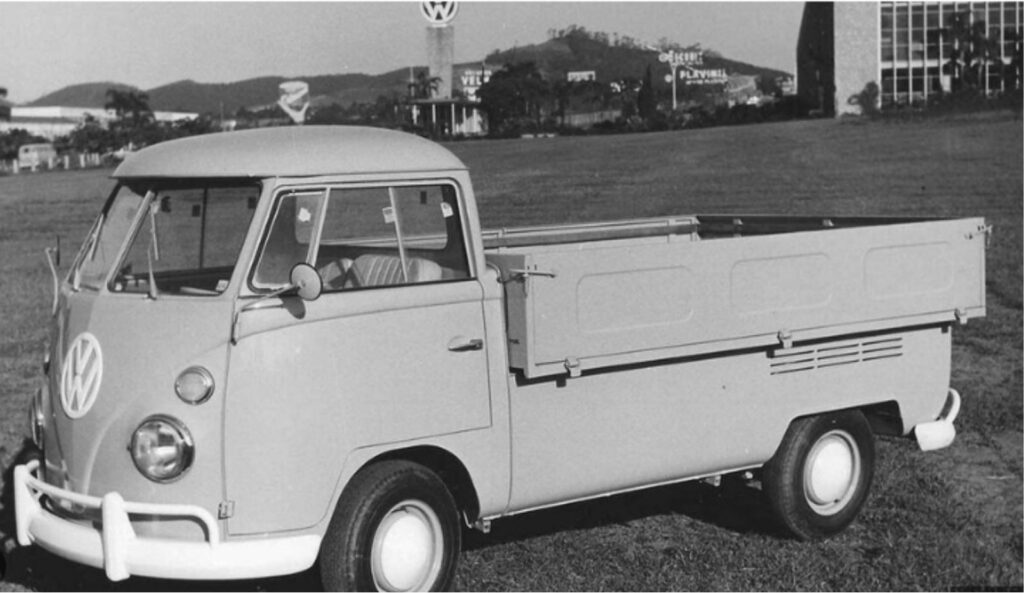
1976 – Visual changes and technical changes to the Kombi Clipper
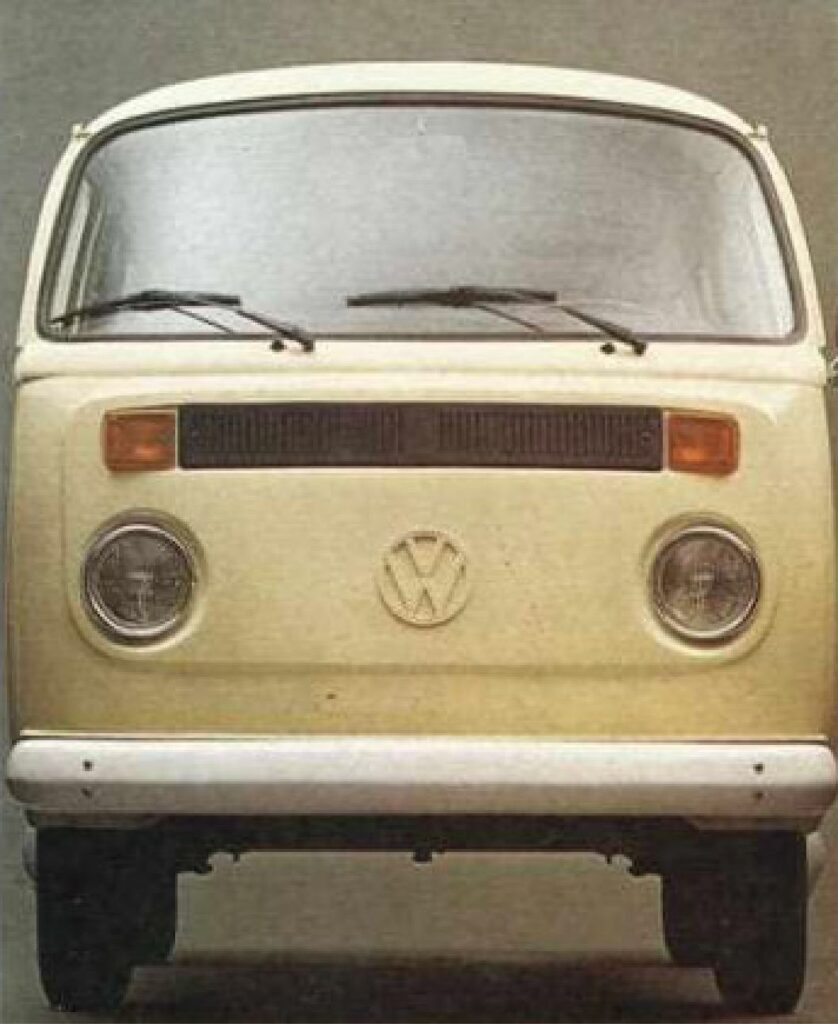
The updated Kombi line introduced a new front design with a single-piece windshield, front doors with crank windows, and larger rear lights, while retaining the central doors and rear windows from the previous model — resulting in a unique combination of the first and second German generations. The engine was upgraded to a 1,600cc with a single carburetor, power brakes were introduced across the entire line, and the dashboard, steering wheel, and bumpers were updated to match the European standard. The body was also reinforced for increased durability.
The year 1981 marked two major milestones for the Kombi: the launch of the Double Cab version and the introduction of the diesel engine. This new 1600cc, water-cooled engine with 50 horsepower was used in both the Panel Van model and the Single and Double Cab pick-ups. With the adoption of the water-cooled engine, the Kombi received a front radiator, protected by a protruding grille. Protective accessories for this grille quickly appeared and became very popular.
1981 – End of the owl Start of the double cabin
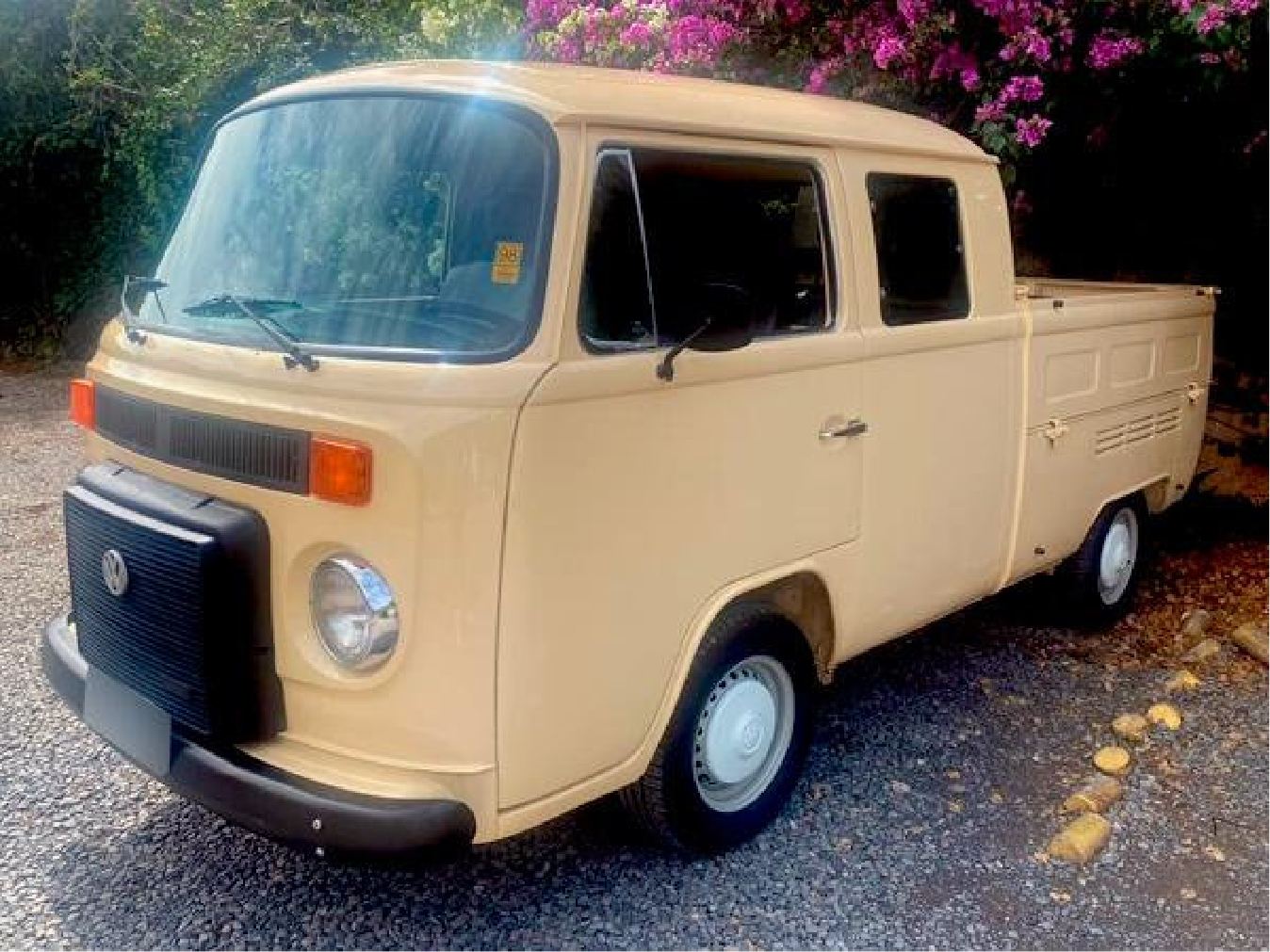
1983 – Kombi lotion series
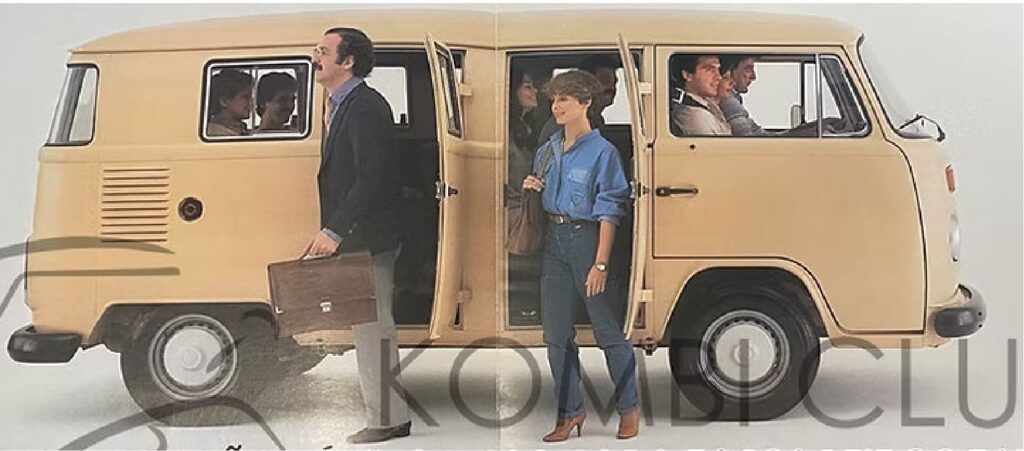
In 1983, the Kombi received important safety improvements, such as the introduction of front disc brakes and three-point seat belts for the driver and front-right passenger. The wheel bolt pattern changed from 5×205 to 5×112, requiring a new design. Other updates included headrests, a new steering wheel, black door handles and headlight rings, as well as a 2 cm lowering of the steering column. The parking brake received a new lever. That year also saw the launch of the Lotação version, with two doors on the right side, known as the “4-door” model.
In 1997, the Kombi underwent a long-awaited redesign that had been anticipated since the 1970s. It gained a sliding side door, larger one-piece side and rear windows, new air intakes, and enlarged engine and trunk lids. The removal of the partition between the front and middle seats allowed the spare tire to be repositioned — now mounted upright on the left side of the trunk. The roof was raised, inspired by the 1991 Mexican version. That same year, the Carat version was introduced, featuring a refined interior, velvet seats, and a 7-seat configuration, reminiscent of the old Kombi Luxo. The Carat remained in production for only three years.
1997 – Sliding door, high ceiling and Kombi Carat.
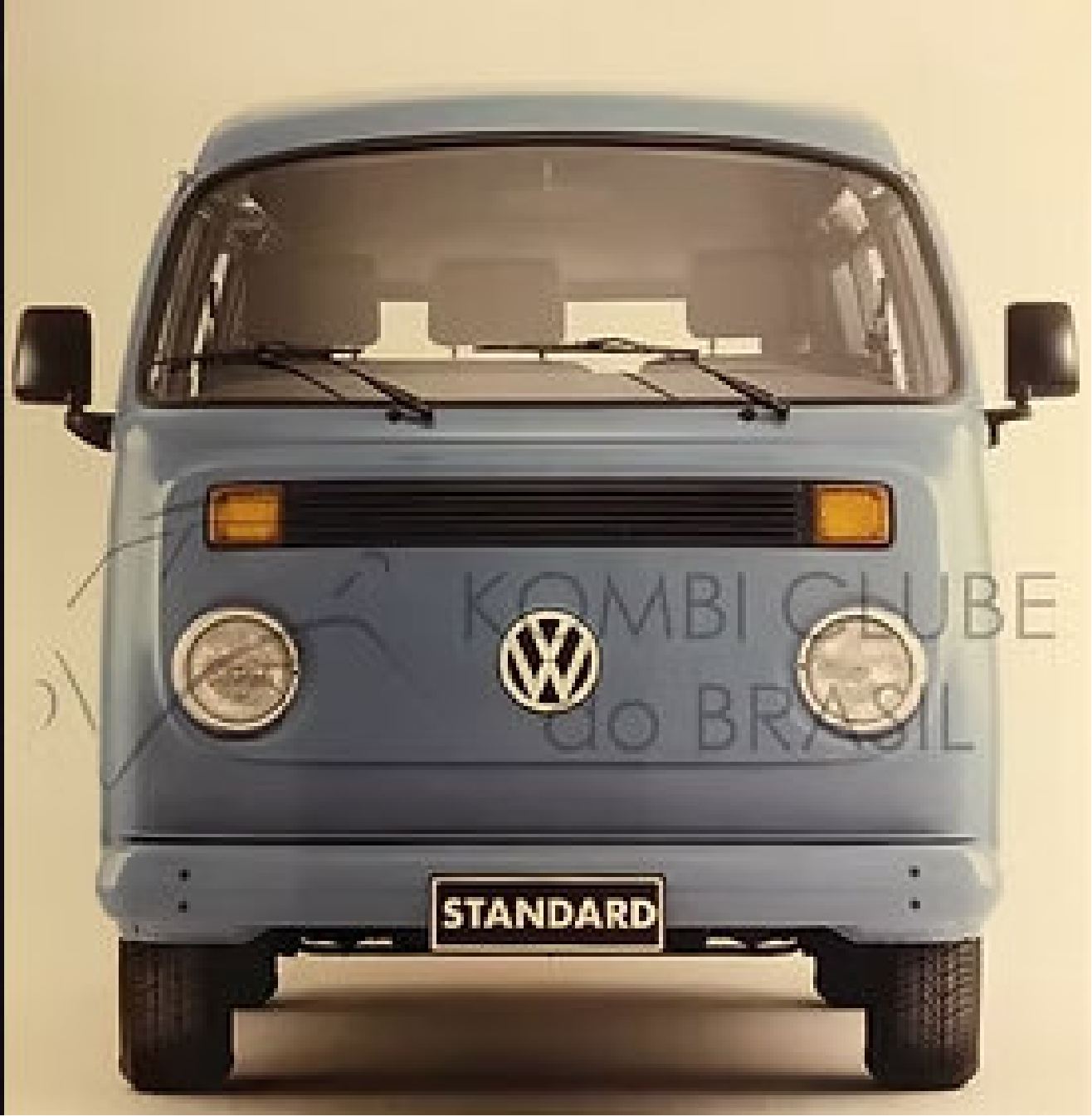
2007 – 50th Anniversary Edition
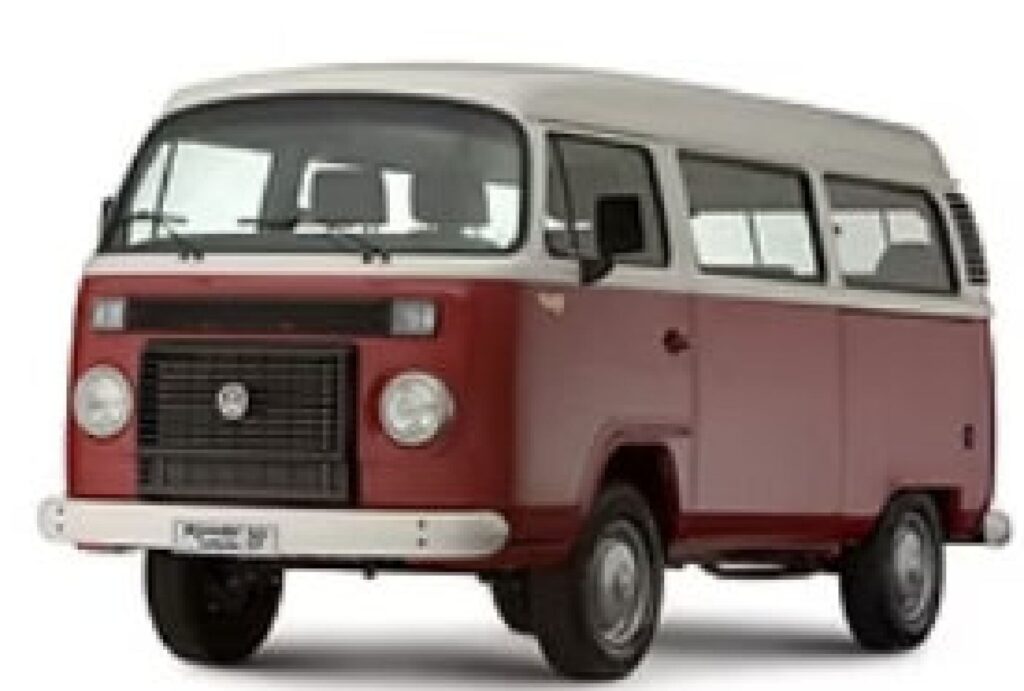
The limited edition Kombi 50 Anos celebrated half a century of production in Brazil with just 50 numbered units. Featuring a two-tone saia-e-blusa paint job in Bonanza Red and Crystal White, it came with green-tinted windows, gradient windshield, rear defroster, seats upholstered in Tear LE Fendy fabric, clear turn signal lenses, smoked tail lights, and three tilt-opening side windows. Each buyer received a letter signed by the VW president with the vehicle’s serial number, as well as a miniature 1957 Kombi in the edition’s colors. It is considered the rarest special edition in the history of the Kombi.
Após 56 anos de produção, a Kombi se despediu das linhas brasileiras em 18 de dezembro de 2013. A exigência de airbags e freios ABS tornou inviável sua continuidade, já que o modelo não acomodava o airbag de forma adequada. Para marcar o fim de uma era, a Volkswagen lançou a Kombi Last Edition, inicialmente com 600 unidades, ampliadas depois para 1.200. Com pintura saia-e-blusa azul e branca, o modelo trazia toques retrô como cortinas nas janelas, pneus com faixa branca e bancos listrados. A série especial ganhou destaque mundial, eternizando a Kombi como um dos veículos mais icônicos da história
2013 – Special series farewell series
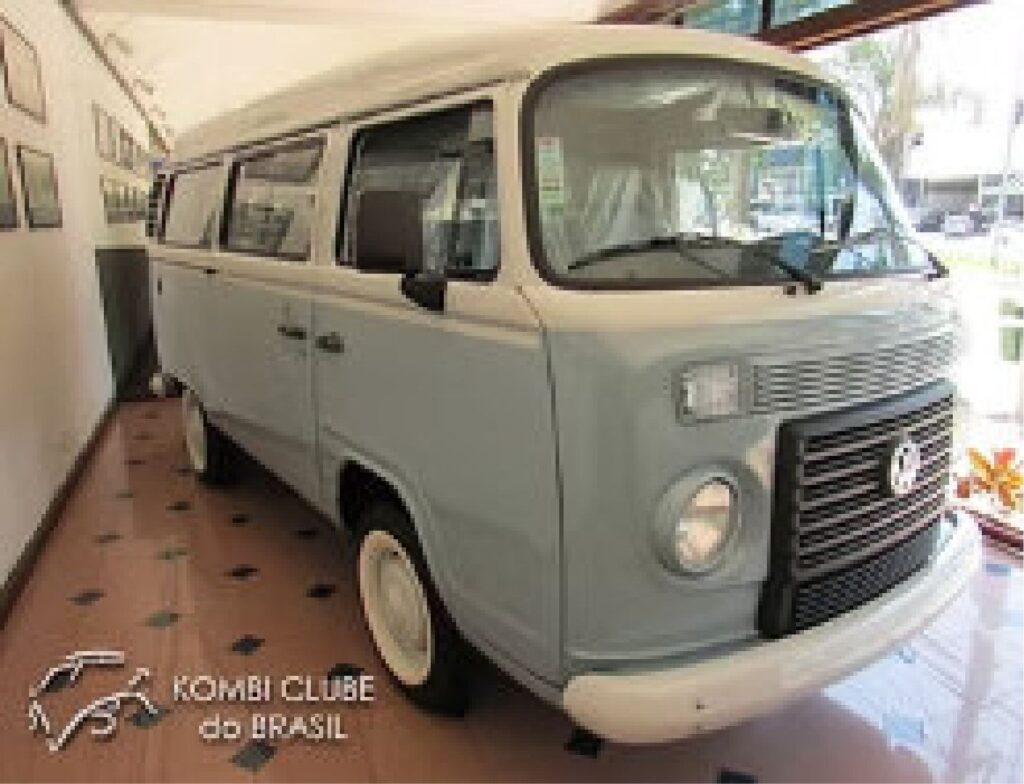
December 31, 2013 End of production
